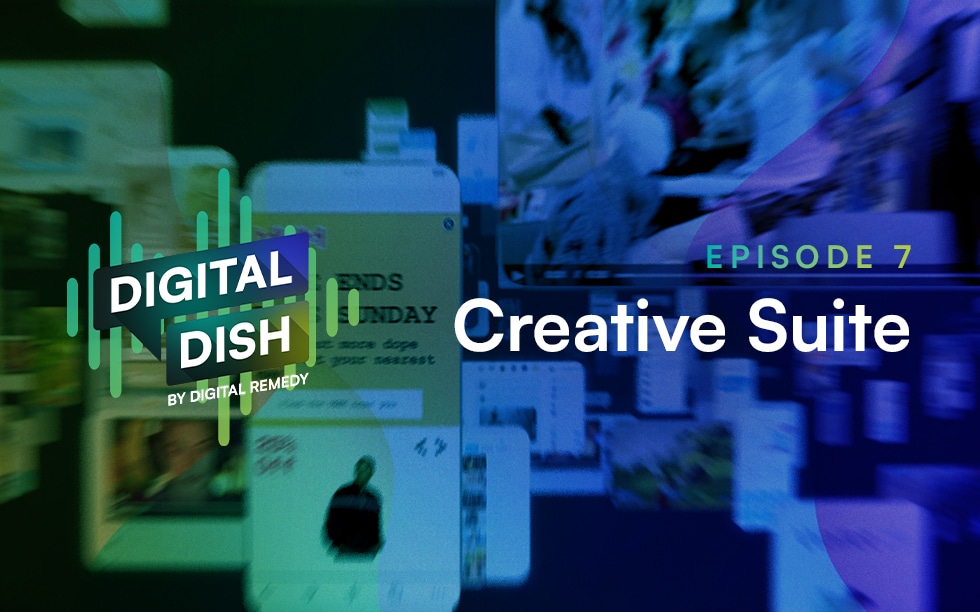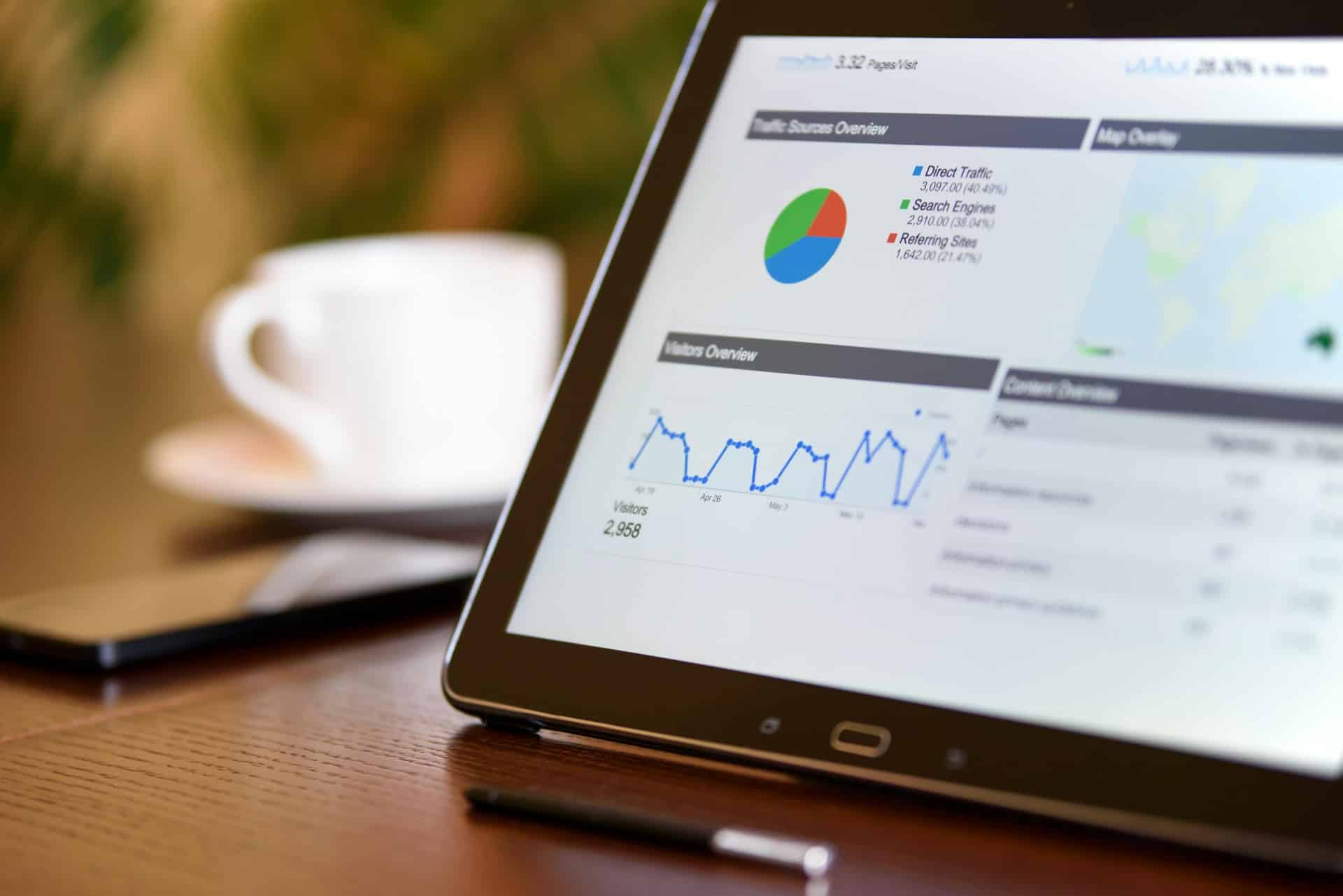Sep 25, 2024
Welcome to the Digital Dish, where we dish on all things ad tech. Today, we’re talking about one of the industry’s hottest topics, creative. Creative has always been the first and one of the most important touch points in the advertising landscape. It’s the moment where brands interact with their customers, And truly communicate their…

Welcome to the Digital Dish, where we dish on all things ad tech. Today, we’re talking about one of the industry’s hottest topics, creative. Creative has always been the first and one of the most important touch points in the advertising landscape. It’s the moment where brands interact with their customers, And truly communicate their messages.
Prefer to read? Here’s the transcript:
[00:00:00] Gabby Turyan, Director of Product Marketing: Welcome to the Digital Dish, where we dish on all things ad tech. Today, we’re talking about one of the industry’s hottest topics, creative. Creative has always been the first and one of the most important touch points in the advertising landscape. It’s the moment where brands interact with their customers, And truly communicate their messages.
Today, we’ll do a deep dive into the evolving role of creative and advertising, industry challenges, industry trends, and creative formats. And lastly, we’ll explore why working with an end to end partner is crucial for seamless activation, measurement, and reporting.
[00:00:54] Jamie Paro, Senior Director, Media Solutions: The role of creativity has changed significantly over time, driven by technology, consumer [00:01:00] behavior, and the media landscape. Here are some key ways in which this evolution has taken place. The shift from information to engagement. What we see in the industry is that initially, brands primarily focused on relaying information about their product or their services.
However, today, there’s definitely a greater emphasis on brands engaging and connecting emotionally with the consumers. Creative ads play a huge role in telling a stronger story, crafting narratives and experiences that resonate deeply with audiences. Integration of technology. The digital age has revolutionized advertising, allowing for interactive, personalized, and real time campaigns.
Creative teams now incorporate technologies like artificial intelligence, augmented and virtual reality, and data analytics to create more immersive and targeted advertising experiences. More content and brand storytelling. Advertisers are now prioritizing storytelling and content marketing and have started to move away from interruptive creatives.
[00:02:00] Creative strategies now prioritize creating compelling narratives that not only promote products, but also entertain, educate, and inspire. A spotlight on authenticity and purpose. With more consumers attuned to authenticity and social responsibility, creative ads now often reflect the values and purpose driven messages that resonate with societal concerns and aspirations.
The multi channel approach. With the growth of digital channels and platforms, we’ve also seen advertisers adapt their strategies to to suit various formats and mediums. This includes deploying creative ads across social media, mobile devices, streaming platforms, and more. And finally, performance driven creative ads.
Analytics and insights have enabled advertisers to get smarter, more efficient, and better at understanding consumer behavior. With data driven creatives, advertisers can learn what touch points make the most impact. and how they can get smarter with their creative strategies. Overall, the essence [00:03:00] of creative ads and advertising remains about capturing attention and driving action.
One of the biggest changes we’ve seen in the industry is the importance of driving performance across the life cycle of a campaign.
[00:03:15] Matt Engstrom, Vice President of Marketing: Creatives were used to lure attention even in the early days of print. But in the age of digital, the advertising space has become increasingly saturated. The average consumer being exposed to not hundreds but thousands of ads daily, both online and offline. So let’s break down some of the challenges that the industry is facing today.
First of all, limited viewability. Ad blockers are reducing the visibility and effectiveness of traditional display and video ads, pushing marketers towards more engaging and less obtrusive ad formats. Also, viewability at scale. has become a challenge considering that ads are sometimes delivered outside the viewable screen.
So advertisers need to be thinking about partners and technology that can help them ensure that their ads are seen by real people. Oversaturation of ads is a [00:04:00] really big issue as well. Each one of us is exposed to. Thousands of images each and every day. So marketers really need to think about deploying a creative strategy that uses relevancy to break through the clutter and make sure that their ads are seen by the people that they want to reach.
Mirroring dynamic consumer behavior is also a concern for advertisers. Evolving consumer preferences, pose challenges in creating ads, resonate across diverse platforms. Personalization enhances relevance, but requires sophisticated data analytics and optimization to deploy. Fragmented creatives and cross channel consistency.
Many advertisers use separate agencies for creative production as well as execution, leading to inconsistent messaging across digital channels. A unified partner can ensure consistent branding and deployment across all channels and publishers. Measurement, attribution and performance is a big one.
Accurately measuring the impact of creative production. Advertising across channels and devices remains challenging. Advertisers need to seek partners that think about performance universally [00:05:00] and are able to tie performance analytics across creative strategies. Addressing these challenges requires a blend of creativity, human and technical intelligence, and data driven insights.
While these challenges exist, working with an end to end partner that can measure, optimize, and adapt strategies will ensure that your creatives are always driving the optimal performance.
[00:05:25] David Rosa, Lead Sales Designer: The industry has evolved and over the last few years we’ve seen the emergence of interactive and immersive ads. There’s a growing trend towards ads that offer interactive elements such as quizzes and games. The goals for these ads are to engage users more deeply than traditional static or video ads.
Personalization. Personalization has also grown and now creative ad units are increasingly personalized based on user data such as browsing behavior, location, or demographics. There are even specific formats like Dynamic creative optimization that allow for real time adjustments to optimize relevance and effectiveness.
[00:06:00] Video and rich media. As attention spans dwindle, video and rich media continues to dominate. There’s also a rise in rich media formats that combine video, animation, and interactive elements to create more engaging experiences. Native Advertising. The age of maximalism has also shed light on Native Advertising, which continues to be important as it seamlessly blends into the surrounding content, providing a less disruptive and more integrated user experience.
Examples can include sponsored articles, promoted listings, or social media native ads. The rise of programmatic creative. Automation in the creative production allows variations in ad messaging, visuals, and calls to action to be tested and optimized based on performance data. Sustainable and ethical advertising.
There is an increased emphasis on sustainability in creatives, reflecting broader societal trends towards eco consciousness and ethical advertising practices. So as technology progresses, what are we bound to see? Voice and audio ads. With the rise of voice assistants and smart speakers such as the Google Home.
There’s a growing interest in audio [00:07:00] based ads that will likely cause a rise in voice technology to engage users in new ways. Additionally, augmented reality and virtual reality. Emerging formats that will push boundaries and allow advertisers to tell immersive and experiential brand stories. Overall, the industry is evolving rapidly.
Driven by advancements in technology and changing consumer behaviors, creative leaders are becoming more sophisticated, personalized, and integrated across various digital platforms to enhance engagement and drive better marketing outcomes.
[00:07:37] Alyssa Hernandez, Account Manager: Advertisers should look for an agnostic partner that supports cross channel creatives and focuses on measurement and optimization to drive performance. An end to end partner is essential for smooth creative ad activation, measurement, and reporting. They handle everything from start to finish, ensuring that creative assets align with brand messaging and are strategically deployed across various [00:08:00] platforms.
This unified approach maintains consistency, enhances visibility, and maximizes audience reach. Additionally, they offer robust measurement and analytics to track performance. Set benchmarks and provide transparent reporting, helping brands optimize their advertising efforts, improve ROI, and make informed decisions for future strategies.
There are two ways advertisers can drive performance for creatives, optimization and measurement. Optimization is important because when creative media is run, there’s an opportunity to see in real time how ads are performing and continue to optimize. With an end to end partner, advertisers can measure the incremental effectiveness of creatives across different channels, providing valuable insights and improving overall performance.
With an end to end partner, measurement is integrated seamlessly. This allows advertisers to couple creatives with metrics like brandless studies and attention metrics to understand audience perceptions and enhance op [00:09:00] effectiveness. In today’s competitive advertising landscape, Partnering with an end to end provider is a game changer.
They ensure your creative assets are effectively developed, strategically deployed, and meticulously measured. By choosing a partner that offers optimization and comprehensive measurement, you can drive superior performance, achieve greater ROI, and make well informed decisions for future campaigns.
Investing in the right partner ultimately empowers your brand to reach its full advertising potential.
Interested in learning more about our best-in-class service and award-winning media technology? Speak to a team member today.
Catch up on previous Digital Dish episodes on our YouTube page and sign up for our Trends & Insights newsletter for the latest industry updates.
Related Posts

In the digital age, the marketing landscape has shifted—presenting both challenges and opportunities for marketers. As the world is.

In the fast-paced world of B2B marketing, the ability to consistently generate high-quality leads is more than just a.

As we approach the new year, the health and wellness industry continues to dominate consumer behavior and shape the.